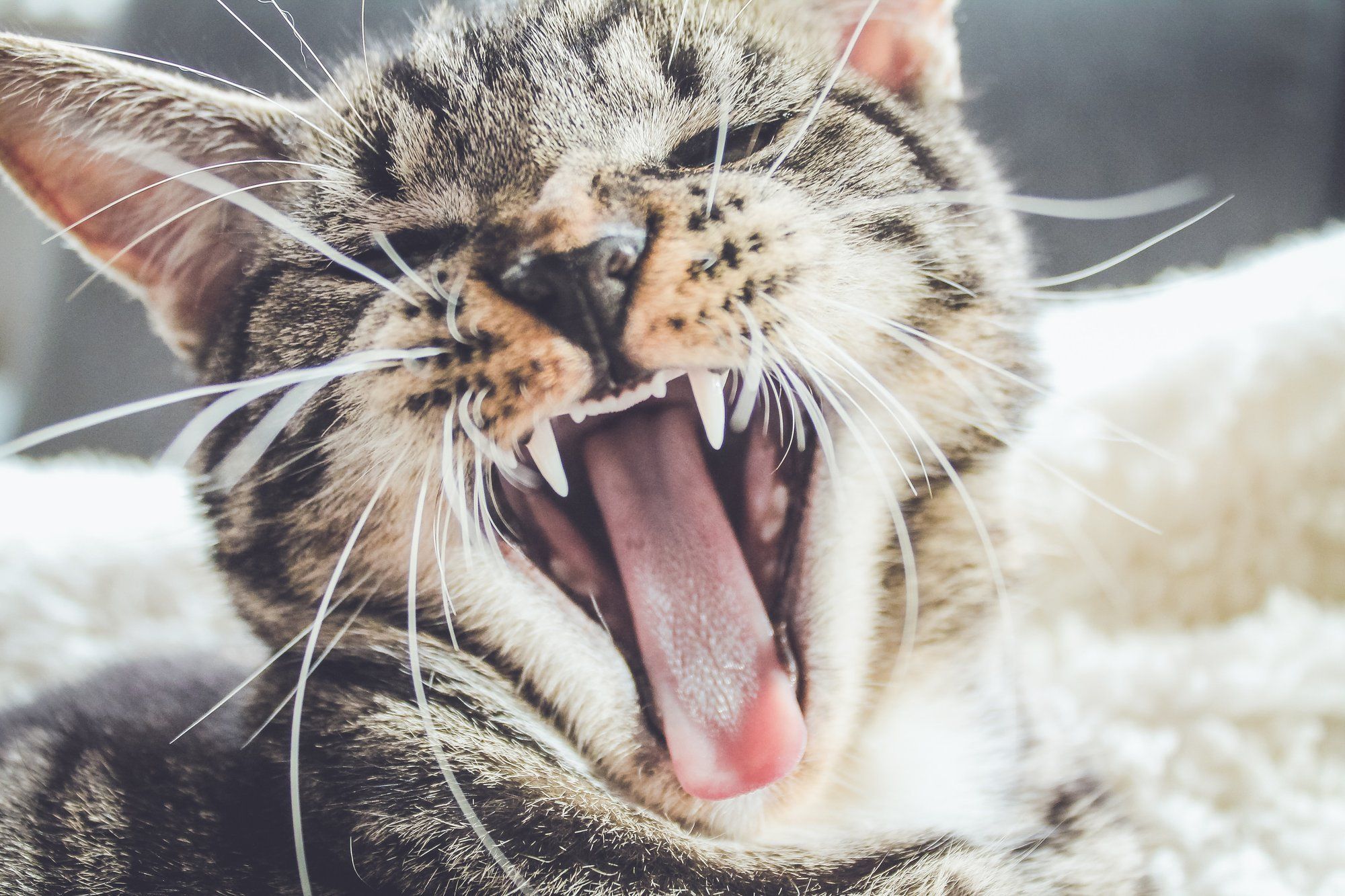January 29, 2020 |7 min read
Wild Cats vs Domestic Cats: I Am Kitty, Hear Me Roar!

Written by

After a woman recently mistook a kitten she rescued for a regular ol' domestic cat – that turned out to be a puma! (True story.) – the internet began wondering... What is the difference between our domestic feline friends and their big cat ancestors? And at what age can you start to notice a difference?
Lions, tigers, jaguars, leopards – and their other wild kin – are surprisingly similar to your pet. Your soft, warm kitty (aka, Felis catus) shares a whopping 95.6% of its DNA with tigers. While your cat may have just as much pounce per ounce as an imposing Bengal from Bandipur, there are other amazing similarities and differences.
But how can you tell the difference between kittens and cubs?
The Eyes Don’t Lie
As soon as a baby feline opens its eyes, the shape of its pupils can tell you if you’ve rescued a “regular” kitty or a strain of cat that belongs in another habitat – a brother from a much wilder mother.
Domestic cats have vertical, slit-shaped pupils, a characteristic known to animals often called “ambush predators.” Slit-shaped pupils give cats the ability to see in low light without being blinded by the sun.
On the other hand, wild cats have round pupils, like us humans. Cats with these round-shaped pupils are considered “active foragers” who chase down their prey rather than sneaking up on them in the dark, ambush-style.
Cat Litter That Prioritizes Their
Health & Your Happiness.
to get your first bag for only $14.99
It's All in the Voice
Would you swear you’ve heard your cat roar? To your ears, their adorable rumblings might have resembled a royal Rahhhhrr! But don’t expect little Max, Oscar, or Chloé to turn any chairs on The Voice with their bravado.
Our domestic cat friends have a fully ossified (hardened) hyoid bone, which is thought to prevent them from roaring.
Only four of kitty’s larger relatives – lions, tigers, leopards, and jaguars – can roar, but the same feature that endows them with those bombastic pipes prevents them from purring. Cougars are the largest cat to purr, while a version of hissing and growling seems universal to all cats.
In a contest of wild cats vs domestic cats, you’re sure to find your kitty’s purr the most endearing, paws-down.
Eat, Prey, Sleep
The only hunting your cat has to do to eat is find you. And by "find," we mean hopping on your bed and standing on your head or chest in the pre-dawn hours.
So, then what’s with the dead mouse you find occasionally on your doormat? Since Kitty has been living with us for thousands of years while being reliably fed, why do our feline friends still feel the urge to hunt?

When your cat brings home a dead or still wriggling critter, it’s playing out a hard-wired instinct. In the world of wild cats vs domestic cats, this holdover can be troubling for some humans who don't like to deal with the aftermath of kitty's natural call of the wild.
Feline mamas in the wild bring home prey they’ve killed or injured to teach their cubs how to fend for themselves. Domestic cats – especially females – will often treat their humans as their family by bringing them “goodies” just like their bigger cat cousins.
Bunting, Catnip & Stink Face
Among the similarities between your standard house cat and cats in the wild is the practice of rubbing – also known as bunting. Scent glands around the mouth, ears, neck, and chin secrete oils that allow Felix to mark his territory.
In addition to leaving their own smells on things, felines universally love certain smells. Lions, tigers, and your calico, Fluff, all tend to enjoy a little bit of herbal bliss. While some cats seem immune to catnip, many domestic and wild kitties like to spice up an afternoon with these green stimulants.
How cats respond to smells is a commonality in wild cats vs domestic cats, too. Both wild and domestic cats have something called a Flehmen response – also known as "stink face."
You’ve probably seen that unmistakable face your cat makes when it gets a whiff of something that it finds strong or disagreeable. (Or maybe you've seen a few thousand memes of Real Housewives of Beverly Hills vs the White Cat.) Their nose crinkles. Their teeth show. And they seem to hit pause.
A strange smell can stop even a 500-pound tiger in its tracks. But for your kitty, it likely just means it's a good time to snap a picture and hope to become the next meme star.
Of course, if you want to minimize Fluffy's risk of "stink face" near the litter box, switch to PrettyLitter to get our odor-trapping, moisture-releasing, health-monitoring litter.

The Enigma of Wild Cats vs Domestic Cats
Most cat lovers would agree that there's a mystery about cats – a certain "je ne sais quoi” that's part of their allure. And then there are things our cats do that are less mystical and more head-scratchingly odd – like your cat's love of boxes.
While there are theories, no one seems to quite sure why your diminutive cat and it’s much larger, wild relatives all love boxes.
When it comes to wild cats vs domestic cats, both have a deep fascination with cardboard enclosures of all shapes and sizes. Open-ended, with and without flaps, shallow, deep, corrugated, or smooth – big and small cats don't discriminate.
Do cats enjoy the texture of boxes? Do they think you can’t see them in there? Or, do they just like having dominion over the box? Either way, "If I fits, I sits" seems to be a feline universal law.
While it may be fun to think of your fur baby as a big cat, or even fantasize about accidentally stumbling on a puma cub, we at PrettyLitter definitely do not encourage the capturing and domestication of wild cats. Those big kitties are meant for the wild only.
Does your little fur ball act more like a big cat? Tell us all your ferocious feline stories in the comments below! Then snap a pic and tag us on Instagram at @PrettyLitter.








